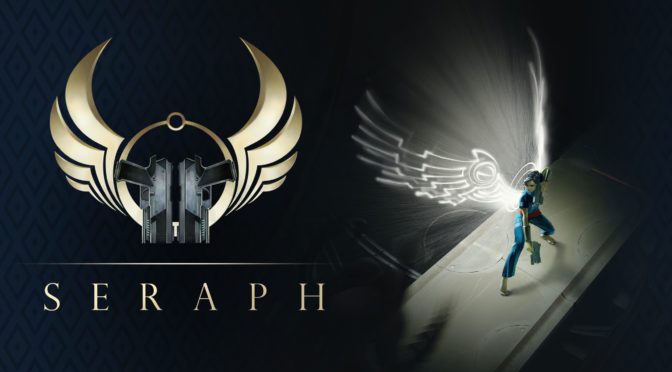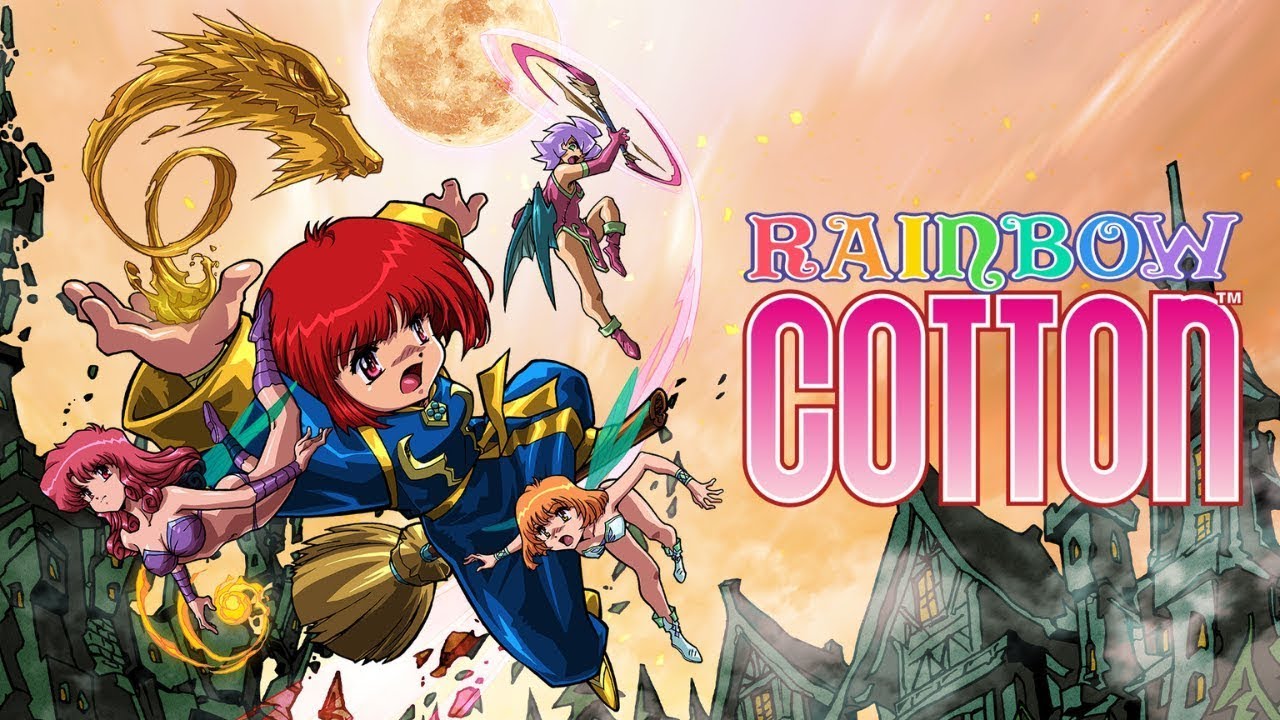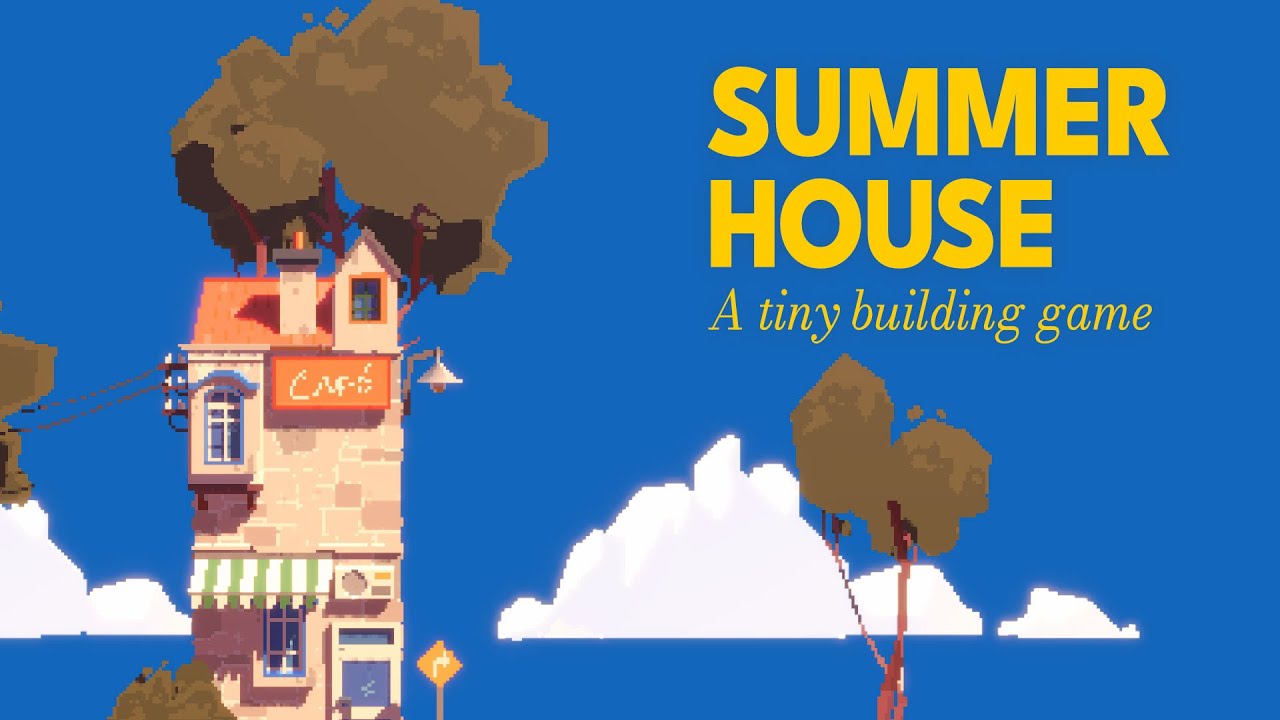Seraph gets off to a fantastic start as soon as you boot it up. The game oozes style and throws at us a story that is genuinely interesting with the themes it plays with. What we have here is a game that I should be in love with and want to shower with praise; and yet here I am not being able to do so.
Seraph bills itself as an acrobatic side-scrolling shooter. This is spot on as you’ll be bounding across levels in a bloody gorgeous manner. It almost seems as you are dancing along, jumping from wall to wall taking on all manner of demonic enemies that get in your way. The story is also this slick mix of religious text and science fiction and it all works great to set the right mood.
 The game plays fast and fluid and will leave you thrilled to bits as you play. It’s a side-scroller in the traditional sense, but Seraph falls more in line with a shmup than anything else. You are pretty under-powered for a great deal of the adventure so you are going to be focusing on evading the bullet hell that enemies will rain down on you.
The game plays fast and fluid and will leave you thrilled to bits as you play. It’s a side-scroller in the traditional sense, but Seraph falls more in line with a shmup than anything else. You are pretty under-powered for a great deal of the adventure so you are going to be focusing on evading the bullet hell that enemies will rain down on you.
I also call it a shmup because you have nearly zero control over your weapons while playing. The game handles all the shooting so that you can focus on movement and evasion. This isn’t such a bad thing as the game does a good job targeting enemies, but you are going to feel slightly handicapped in certain situations. There were more than a few times where I wished I was doing the shooting as I wanted just a bit more control of what was going on.
But the very elements that make Seraph so unique and interestin end up holding it back the deeper you get into the game. Jumping around is a blast, but the level design often does everything it can to make you feel boxed in. This really hurts when half a dozens enemies (that’s about as many as there are) are in your face and you have nowhere else to go. You are going to die a lot which isn’t a bad thing in and of itself, but much of the time your are going to feel the game was at fault for your death instead of a lack of skill.
 The acrobatics also hinder things as Seraph (also the name of the main character) automatically sticks to walls. This is wonderful in larger spaces and makes climbing up through stages a real blast, but combat often leads to you getting locked onto a wall while enemies rain down hell upon you. Things often get messy visually in combat and losing yourself in the mix happens quite a bit. Seraph works so darn well and has some great ideas, but the developers seemed to have failed to understand how to get the most out of it thanks to inconsistent level design.
The acrobatics also hinder things as Seraph (also the name of the main character) automatically sticks to walls. This is wonderful in larger spaces and makes climbing up through stages a real blast, but combat often leads to you getting locked onto a wall while enemies rain down hell upon you. Things often get messy visually in combat and losing yourself in the mix happens quite a bit. Seraph works so darn well and has some great ideas, but the developers seemed to have failed to understand how to get the most out of it thanks to inconsistent level design.
The story was more than enough to keep me going as it was intriguing, but the gameplay never really went anywhere past the first few levels. Sure, you can earn power-ups that you can bind to the face buttons on your controller (mouse and keyboard are a nightmare), but these, while pretty looking, don’t really do much in terms of mechanics. You can also unlock and craft weapons and items that you can then find in lockers throughout the levels, but they never have enough ammo and sometimes require you to get close to enemies, thus killing the movement.
 After about the first hour the story gets deeper and more expansive, but the game will continue to ask you do do the same things you were doing during the first few levels. Every time you enter a new level the objective asks you to kill the head daemon to unlock the exit. Sometimes you’ll be required to destroy a few energy crystals, but other than the games killer bosses, everything really begins to drag.
After about the first hour the story gets deeper and more expansive, but the game will continue to ask you do do the same things you were doing during the first few levels. Every time you enter a new level the objective asks you to kill the head daemon to unlock the exit. Sometimes you’ll be required to destroy a few energy crystals, but other than the games killer bosses, everything really begins to drag.
Seraph also deals with a lot of pacing issues that I haven’t had to deal with in a long time. You may have a level that you can breeze through with your standard sidearms and powers, but the next level may decide to crank things up to eleven just for the fun of it. The game uses a dynamic difficulty scaling feature, but I don’t think it works all that well, especially with the level design. It’s supposed to get harder the better you do, but it just seems very inconsistent. Also, a game should get harder naturally the deeper you get, so I don’t see a real need for this.
 Seraph is also procedurally generated and that means you can keeping coming back for something new, but this very feature leads to the problems I talked about with regards to level design. In a side-scroller things need to be planned out to let the player take advantage of the mechanics in play and how you intended them to use them, but that doesn’t always happen here because everything is random. One level is going to be beautifully laid out, but the next could be a cramped mess. This is a real pain as you’ll be traveling up, down, left, and right across each stage, but going down is often a real shit-show. You can’t see what’s below you thanks to the camera so you’ll often fall into a group of enemies that will swarm you.
Seraph is also procedurally generated and that means you can keeping coming back for something new, but this very feature leads to the problems I talked about with regards to level design. In a side-scroller things need to be planned out to let the player take advantage of the mechanics in play and how you intended them to use them, but that doesn’t always happen here because everything is random. One level is going to be beautifully laid out, but the next could be a cramped mess. This is a real pain as you’ll be traveling up, down, left, and right across each stage, but going down is often a real shit-show. You can’t see what’s below you thanks to the camera so you’ll often fall into a group of enemies that will swarm you.
Visually Seraph is quite nice with stages broken up, each having a really nice look. The enemies are wicked inventive and the few there are will give you pause with how morbid they look. The backgrounds are particularly nice and well drwan, but there are times where the characters and backgrounds seemed to get lost within one another. There is just too much going on during the action bits for your eyes to easily follow that it often becomes pretty muddy.
 I know it may seem like I knocked the game really hard in this review, but that’s only because I really wanted to like it a lot more than I did. There really is something special here so every little thing that I took issues with was highlighted in my experience. Still, I need to be clear that Seraph is not by any means a bad game, just one that should have handled things a bit better. If you are looking for something unique and that pushes the stagnant side-scroller genre forward, then Seraph is for you and the price is just right. Just be aware of the issues that I brought up in this review.
I know it may seem like I knocked the game really hard in this review, but that’s only because I really wanted to like it a lot more than I did. There really is something special here so every little thing that I took issues with was highlighted in my experience. Still, I need to be clear that Seraph is not by any means a bad game, just one that should have handled things a bit better. If you are looking for something unique and that pushes the stagnant side-scroller genre forward, then Seraph is for you and the price is just right. Just be aware of the issues that I brought up in this review.
3/5
‘Good’




